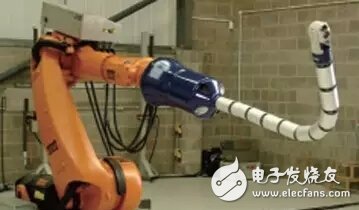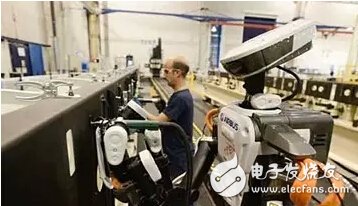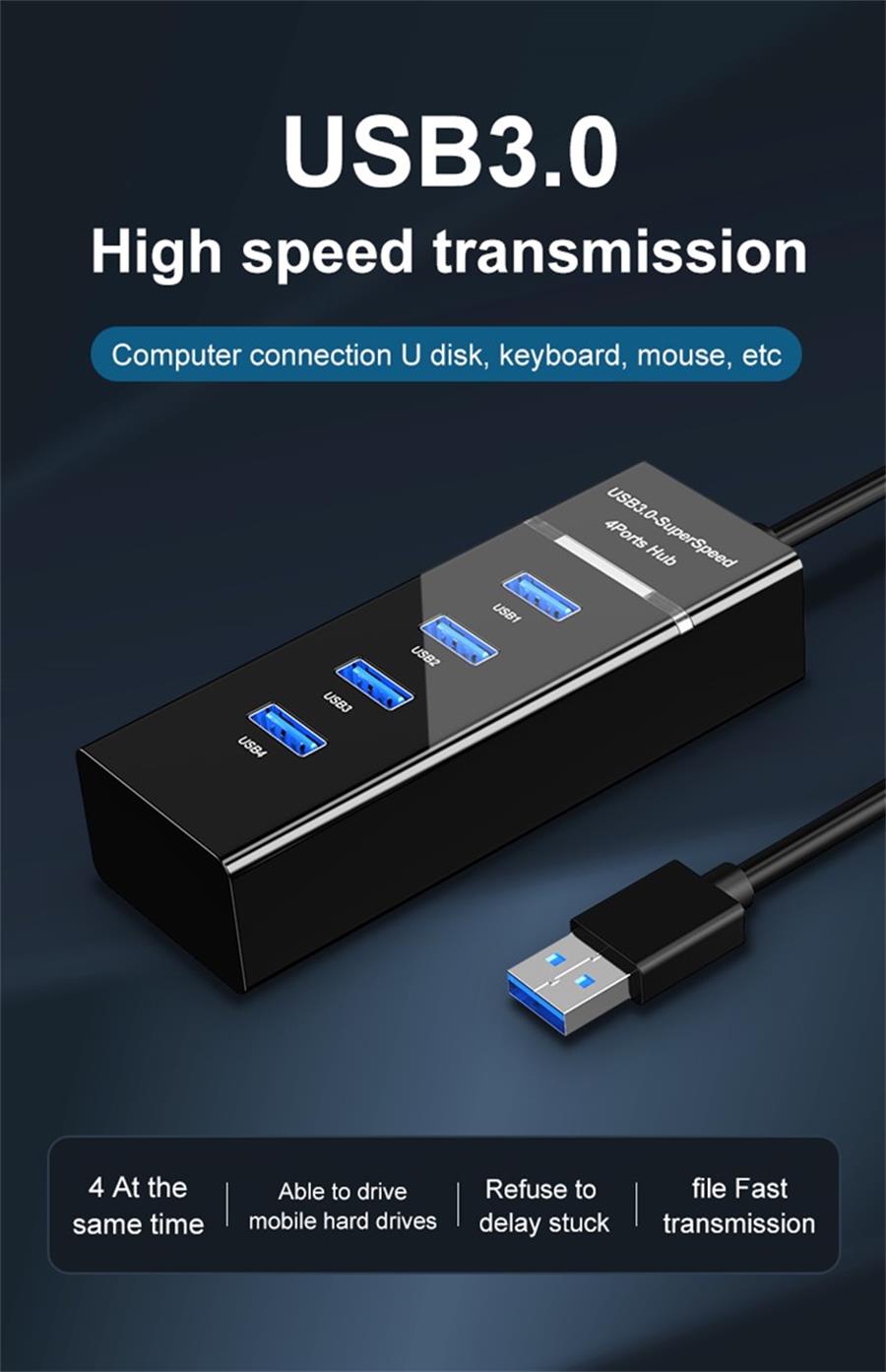With the gradual deepening of industrial robots in the field of aerospace manufacturing, some shortcomings have begun to emerge, such as low automation of job planning and interference collision detection, long-term production preparation time, positioning flexibility and scalability. Insufficient considerations lead to low equipment utilization, etc. In the single-piece small batch production mode of aviation products, the advantages of robots are sometimes not reflected.
Therefore, industrial robots in the field of aerospace manufacturing need to better adapt to the changing task requirements and complex site environment in single-piece and small-batch production modes, improve positioning and motion accuracy, shorten offline programming and production preparation time, and improve equipment utilization. Rate, etc., to really play the advantages and characteristics of the robot. The following technologies will become the key enabling technologies for commonality.
(1) High-precision measurement and positioning technology. Industrial robots have high repetitive positioning accuracy and low absolute positioning accuracy, which cannot meet the absolute positioning accuracy requirements in aircraft digital assembly. Therefore, high-precision measuring devices are required to guide the robot end effector to realize the servo control of the motion trajectory. At present, large-scale measurement mainly uses laser tracker and iGPS. In local measurement, monocular vision, binocular vision, hand-eye vision, and laser ranging sensor have their own advantages. In some special occasions, sound perception, Force sensor is also useful. It is foreseeable that multi-sensor information fusion technology will be further developed.
(2) End precision compensation technology. The accuracy of robot end is affected by many factors such as kinematic interpolation, robot load, stiffness, mechanical clearance, tool wear, thermal effect, etc. Therefore, in addition to using high-precision measuring instruments, the establishment of positioning error model and compensation algorithm is also to improve positioning accuracy. Important means. To this end, it is necessary to identify the joint stiffness, position error, temperature-induced deformation of the robot, obtain an error model or error matrix, and then provide servo correction for the positioning of the end effector by the accuracy compensation algorithm.
(3) Intelligent planning technology. The robot is the carrier of automation. Whether it is drilling, spraying, welding, cutting, assembling or gluing or dispensing, it finally relies on the end of the robot to strictly follow the predetermined trajectory movement. Therefore, the result of trajectory planning directly affects the working efficiency of the robot and Efficiency, while the efficiency and automation of trajectory planning directly affects production readiness. On the basis of in-depth understanding of the process, automatic path planning, robot trajectory optimization, automatic interference verification, process parameters and process optimization are an important research direction.
In order to improve the intelligence of robots, artificial intelligence methods such as expert systems, fuzzy systems, evolutionary computation, group computing, machine learning, neural networks, etc. will be introduced in large numbers, while image recognition, speech recognition, speech synthesis, natural language understanding and other technologies will be introduced. It will also be widely used to increase and improve the way of human-computer interaction. In addition, the rapid development of technologies such as cloud computing and big data, resource sharing, knowledge sharing, and data mining provide new ideas for improving the analysis, decision-making, and collaboration capabilities of robots.
(4) Robot control technology. Since the industrial robot is a nonlinear, multi-variable control object, combined with information feedback such as position, torque, force, and vision, compliant control, force-position hybrid control, and visual servo control have been widely applied and studied in the face of high speed. High-precision, heavy-duty operation requirements, robot control methods will remain the focus of research.
(5) Innovative design of robot body structure. Due to the special structure of aviation products, traditional industrial robots sometimes cannot meet the demand. With the gradual deepening of robotics in the field of aviation manufacturing, there is an increasing demand for special, special and non-standard robots, which means that it needs to be specific. The task carries out innovative design of the ontology structure and expands the application field of the robot.
(6) Reconfigurable flexible processing unit technology. In the manufacture and assembly of aircraft, the large number, large size and variety of tooling frames are a great expense. Future tooling will adopt a modular design to change the tooling pattern by moving various dynamic modules to suit different sizes and types of products. The “No-frame Digital Assembly Technology Center†being developed by Airbus is the product of this concept. The center is a combination of software and hardware assembly workstations, which integrates integrated digital tooling and various assembly, adjustment and inspection technologies. Can greatly improve the efficiency of aircraft assembly.
(7) Digital manufacturing system support technology. In the digital process design and product manufacturing mode based on Model Based DefiniTIon (MBD), the 3D process digital model, tooling digital model and inspection digital model derived from 3D design digital model become robot operation planning and The basis for off-line programming, therefore, job planning based on 3D digital-to-analog, visualization of assembly processes based on lightweight models, digital inspection based on MBD, and integrated data management functions based on MBD are indispensable. In addition, future robotic offline programming and control systems need to be more open, including support for standard 3D data formats, standardized data access interfaces, and interconnection with manufacturing information systems.
With the breakthrough and progress of these key technologies, the future aerospace manufacturing robots will develop in the direction of intelligence, flexibility, dexterity and collaboration to adapt to the ever-changing development of aviation industry and the emerging new demands:
(1) Intelligent. Existing industrial robots require manual or offline programming to perform the job. Improving the intelligence of positioning calibration, operation planning and collision detection to shorten production preparation time is an important development direction of industrial robots in the future. People even hope that future robots can plan and control their own behaviors in real time and complete their work independently. Instead of being limited to action repetition.
(2) Flexibility. Traditional industrial robots pursue speed and precision, and they are heavy, bulky, power-consuming, and rigid. However, in some special occasions, lightweight robots with joint force feedback and joint flexibility are small in weight and low in power consumption. Features such as higher load/weight ratio and compliant control.
(3) dexterity. Aeronautical manufacturing often requires operations within complex, concealed product spaces, such as monitoring inside aircraft siding, standard part fastening and sealing, and inlet port measurement, installation, spraying, inspection, etc., joint redundancy degrees of freedom Robots have a good prospect due to their large working space and high flexibility.

Highly flexible Snake Arm robot
In terms of the traveling mechanism, most of the industrial robots adopt a track structure, occupying a large working space and a large ground, and the plant input and maintenance costs are high. It is a more economical way to install an industrial robot on a wheeled or crawler mobile platform to achieve mobile manufacturing around the part. A crawling robot that uses a vacuum suction device or the like to achieve surface adhesion of a workpiece is also worthy of attention.
(4) Collaboration. Arms or multi-arm robots are highly valued by many domestic and foreign scientific research institutions. ABB, KUKA, YASKAWA and other internationally renowned robot manufacturers have developed related products. At present, there are already two-armed robots for aerospace composites. Automatic placement of reports.
In addition, although the development of robotics is changing with each passing day, it is impossible to completely replace people, integrate robots into production, make robots work side by side with people, eliminate protective isolation between human and machine, and free people from simple and boring work. And then to engage in more value-added work has always been the most ideal and attractive aviation manufacturing model in people's minds. At the end of 2012, Germany, Austria, Spain and other countries jointly launched the VALERI project under the support of the EU's Seventh Framework Program “Future Factory†project, with the aim of achieving advanced robot identification and human-machine coordination. Airbus has also made bold attempts in its FUTURASSY project to apply the human-type dual-arm robot developed by Kawada Industry Co., Ltd. to the A380 rudder assembly workstation for riveting work with ordinary human employees.

Future human-machine collaboration prototype
Conclusion
China's aviation manufacturing industry is in a stage of rapid development. The emergence of new materials and new processes and the demand for high-quality, low-cost and flexible manufacturing make enterprises urgently need upgrades of technology and equipment. Therefore, we are looking forward to the further development of industrial robot technology. At the same time, advances in robotics and basic theory research have also provided opportunities for industrial robots to gain favor in the aviation industry. It is foreseeable that in the era of China's vigorous development of aviation technology, industrial robots will play a greater role in the field of aviation manufacturing.
USB3.0 provides a standard interface for all kinds of devices that are connected to PCS or audio/high-frequency devices.The theoretical transmission speed is up to 5Gbps. HUB is commonly known as a hub, which is used to connect multiple computers or network devices in a network using a star topology. The USB 3.0 Hubs is an upgrade of the USB 2.0 Hubs. The transmission rate of the USB2.0 is 480Mbps, and the transmission rate of the USB3.0 is 5Gbps. The maximum transmission speed is 10 times that of the USB2.0, and the transmission speed is faster.
The USB 3.0 hub provides a quick and easy way to connect all the peripherals you use on your desktop. You can connect 2 external monitors, gigabit Ethernet ports, headphones/speakers, USB printers and scanners, keyboards, mice and other peripherals with a single USB 3.0 cable to your computer for up to 5Gbit/s external storage access (10 times faster than USB 2.0). USB HUBS can do split, but not evenly. If, as the subject says, you only have two devices, and the two devices are transmitting at the same time and taking up as much bandwidth as possible, then you end up with two devices each taking up 50% of the bandwidth. Due to the fast theoretical speed of USB3.0, even if divided into four parts, the theoretical bandwidth of each port is still as high as 1Gbps, and the number of converted bytes is close to 100MB/s, which is still a very high bandwidth.

Usb 3.0 Hubs,Wireless Usb Hub,Usb C Hub For Desktop,All In One Usb C Hub
Henan Yijiao Trading Co., Ltd , https://www.yjusbhubs.com